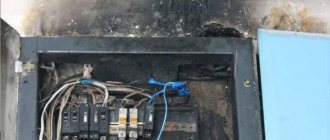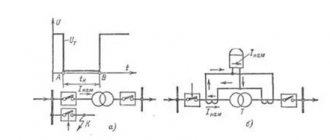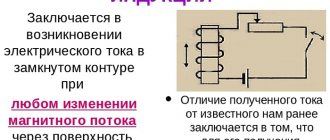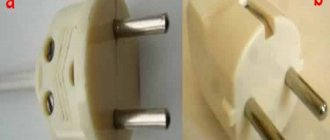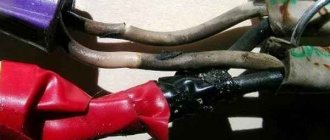Regardless of the cause of the incident, a short circuit in the electrical wiring is one of the most unpleasant (from the point of view of diagnosis and repair) malfunctions of any electrical circuit - in an apartment, in a private house or at a manufacturing plant. A particularly difficult case is covering hidden electrical wiring, because the wires are hidden under a layer of plaster.
Petrov Vasily Alexandrovich
Electrician 6th category, Petroenergospetsmontazh LLC, 18 years of experience
Ask a Question
Even if a home electrician's tools have tools that can help you find the location of the breakdown without opening the walls, you will still have to remove the wires to make repairs.
Types of wiring short circuits, their causes and research methods
It would seem that the reasons for a short circuit in the power supply wiring and their types are different issues, but in fact they are closely interrelated. In fact, a short circuit is a consequence of a number of reasons why the phase wire is in direct contact with the neutral wire or the insulation between them does not prevent the occurrence of an arc (obviously, if c' is the voltage across the conductors). The main causes of a wiring short circuit and the possible consequences by which the location of the fault can be determined are the following:
Physical wear and tear of insulation
This happens over time and due to even minor but regular temperature changes.
Usually in this case, the insulation gradually becomes brittle from flexible - cracks appear on it, in which moisture or dust can accumulate. In the event of an unfavorable combination of circumstances, this can lead to a short circuit in the microarc, and this is the most difficult case from the point of view of troubleshooting.
In this case, outwardly all the wiring looks intact, but when voltage is applied, over time the circuit breaker turns off.
The search for the vast majority of faults in an electrical circuit occurs on the principle of checking the “weak links” - these are any contacts, transitions - all those places where the outer insulation of the cable is exposed during installation. Therefore, with hidden wiring, troubleshooting should always begin with sockets, boxes and screens.
As a result - in this case, a thorough inspection of the wiring is carried out - if the switch is already penetrated, then it is likely that the location of the insulation damage will be burned through and become visible. In some cases, it is necessary to repair the "stress test" wiring by applying a higher voltage to it. This is a rather extreme method, because in essence it is necessary to provoke a complete short circuit in the electrical wiring, after which the location of the fault will be visible to the naked eye.
For hidden wiring and searching for microcracks in insulation, you can also use a megohmmeter, but it will only show the presence of a short circuit in a localized section of the electrical circuit and will not be able to determine where it occurs.
Having discovered a malfunction, depending on the general condition of the wiring, it is necessary to decide whether to change the cable or restore the insulation with electrical tape.
There is an example of a megohmmeter in the video:
Damage to insulation from rodents
This is a fairly common phenomenon in rural areas, and in industrial conditions such breakdowns are far from uncommon: mice chew the outer insulation of the cables, then the inner insulation and short-circuit the phase.
The difficulty in finding such a malfunction may lie in the fact that it is not known where the mouse can choose a place for its “meal”. But on the other hand, usually the place of damage is clearly visible, so a superficial examination of the thread is sufficient, even for its entire length.
Smirnov Konstantin Yurievich
Electrical network section foreman, Petroenergospetsmontazh LLC
Ask a Question
It should be borne in mind that a complete circuit does not always occur here - sometimes the mouse can partially damage the insulation and short-circuit the wires not directly, but through itself. In this case, there is a very high probability of finding the place where the wire was damaged by a dead animal, which is chained to the wire gnawed by a convulsion from the electric current. Although sometimes it happens that the mouse breaks away from the cable, especially if it manages to directly short-circuit the wires and a complete short circuit occurs in the chewed wiring.
Significant overheating of cable insulation
It is not always noticeable to the eye, but when voltage is applied to the wires, they are subject to an electromagnetic field, which tends to straighten their metal parts. As long as the wire works normally, this does not matter much, but if you connect too powerful a consumer to it, the wires will begin to overheat. When this causes the insulation to become soft, the conductors, under the influence of an electromagnetic field, loosen the plastic from the inside and eventually break through completely. As a result, a complete short circuit will occur and the circuit breaker will turn off, and if you are really unlucky, the wire insulation itself will catch fire.
Until the wire insulation melts, it is impossible to visually notice that it will become soft, so after laying a new line or connecting additional electrical equipment, it is imperative to check whether the cable is overheating.
Wire manufacturers usually indicate on the labels how much short-term heating the insulation can withstand, but in any case, if overheating has already occurred, it is better to replace the cable.
Direct connection of phase and neutral wires
The reasons for the direct short circuit of power wiring can be very different: from simple negligence, which is sometimes allowed during installation, to an accident due to a storm or other natural disaster.
The main thing here is that with direct contact of the phase with zero, there is always a sharp increase in the strength and temperature of the current on the conductors carrying the current. In most cases, the wires are not designed to withstand short-circuit currents, so a mini-explosion occurs at the point of contact, as a result of which the insulation burns and dispersed molten particles of the conductive conductors are carried away into ash around. In this case, there is no particular problem in finding a short circuit in the wiring - everything is visible to the naked eye - the wires are loose and everything around is covered with soot.
Here it is especially necessary to take into account that soot, which covers the entire adjacent surface, like dust, is capable of conducting electric current in certain concentrations, therefore, when eliminating the consequences of a short circuit, it must be thoroughly cleaned.
Possible causes of electrical wiring damage
The reasons for a short circuit in electrical wiring are quite varied, but most of them are related to its improper operation and non-compliance with standards during installation.
We will list only the most common causes of damage:
- The first and most common is aging wiring. Like everything in our world, wires do not last forever. They are susceptible to oxidation, which changes their physicochemical properties. At the same time, not only the wire material, but also the insulation is subject to aging. This is especially pronounced in aluminum wires.
- The second, but no less important factor is wire overload. The reason for this may be either an incorrect choice of electrical wiring cross-section (see Calculating the wire cross-section based on power), or the connection of electrical equipment for which it is not intended. Due to overload, the wire overheats, which destroys its insulation and changes its physical and chemical properties.
The photo shows the consequences of a short circuit
- Also, any instruction will tell you that incorrect connection of wires leads to their accelerated aging. After all, contact connections are the weak point of any electrical wiring, and they must be made in accordance with clause 2.1.21 of the PUE. This clause allows the use of only welding, soldering and screw or bolt clamping methods to connect wires.
- Well, in last place in our article is human activity. Due to flooding, intentional or accidental damage to the wire insulation, or mechanical impact, a huge amount of damage occurs.
How to prevent short circuit
The easiest way is to follow the recommendations specified in the PUE: almost all entries in this book are preceded by some type of accident or at least an emergency situation. Well, since most likely no one will remember the rules, at least one should use common sense, which dictates the following:
- If the wiring is old, it is highly recommended to replace it. If for some reason this is not possible, you should at least inspect the contacts of the sockets and think about whether they require additional insulation.
- If the apartment is flooded by neighbors from above, even if nothing is shorted, this is a reason to reconsider the twisting of wires in junction boxes: under the influence of moisture, the adhesive side of the electrical tape loses its properties.
- Be careful when driving nails into walls: a poorly driven nail carries with it most of the headaches associated with replacing broken wire.
It is highly recommended that you draw up a wiring plan when carrying out a major renovation, and if there is any kinking in the wires at any point, be sure to indicate this on the diagram - this is a potential weak link.
You can also take pictures of the cables before they are hidden in the wall.
- In the private sector, it is imperative to take additional measures to protect electrical wiring from rats and mice - there are quite a lot of ways to combat rodents found by household electricians - this could be metal corrugations, sealing cables with putty and other methods.
- If you were to plug a powerful device into an outlet, you should double check that the contacts and insulation are not burnt.
An example of searching for a short circuit using a special device is in the video:
Useful short notice
The current arising due to such a phenomenon can bring not only destruction, but also benefit. There are a number of equipment that operate under conditions of increased current. A classic example of such devices is electric arc welding. Its operation is due to the connection of the welding electrode and the ground loop.
Under significant overloads, the functioning of such devices is short-lived. It is provided by a high-power welding transformer. In the place where the 2 electrodes come into contact, a fairly significant current is generated. This leads to the release of a large amount of thermal energy, which is sufficient to melt the metal in the contact area. This process ensures welding operation. The seam is neat, durable and strong.
Elimination of short circuit consequences
Most often, it all comes down to replacing the damaged section of the wiring and it is almost guaranteed that you will have to restore the cable instead of the burnt one. The basic rules are:
- The space adjacent to the short circuit must be thoroughly cleared of soot - this may cause a recurrence of the short circuit.
- You should not skimp on the wire and try to leave the current-carrying wire on which the insulation has burned - it is always better to replace the wire completely.
- If complete closure has not yet occurred, but the sockets have begun to melt, you should not try to repair them: after repeated heating / cooling, the structure of the metal changes and the device becomes more vulnerable.
Belukhin Sergey Gennadievich
Electromechanic 4th category LLC "Petroenergospetsmontazh"
Ask a Question
If the wiring begins to shorten “from old age” (the insulation has become brittle), then this is an urgent signal for a full repair - in any case, it will cost less than eliminating the consequences of a possible fire.
Repair of damaged area
Repairing the damaged area is quite simple (see Do-it-yourself diagnostics and repair of electrical wiring). Although ideally a new wire should be installed, temporary repairs can be made to this area. To do this, it is important to use a wire with a cross-section no smaller than the existing one and made of the same material.
So:
- First of all, we will have to remove the layer of plaster under which the wiring is hidden. This should be done carefully so as not to damage it further.
- We make sure that we have correctly identified the location of the damage by the presence of a break or traces of a short circuit.
- We cut the damaged wire and connect to it a small insert made of wire of the same material. The connection is best done by soldering or pressing. This will significantly reduce the depth of the required niche for subsequent plastering of the wire.
Repair of damaged wires
- It is best to use heat shrink as insulation, which will be much easier to put on and which will again save space.
- After repairs, check the functionality of your network by applying voltage and turning on the load. If possible, apply a higher load and check that there is no increased heat at the joints. If everything is fine, you can plaster the niche with the wire.
- It is better to reapply voltage and put it into operation after the plaster has dried.
Ways to prevent
All protective measures to prevent short circuits are based on prevention and prevention, reducing the likelihood of an emergency. Such measures include:
- Installation of circuit breaker or fuses. The machine will turn off the power in time, regardless of the cause of the short circuit.
- Regular inspection of electrical wiring. Places of insulation melting can be seen visually and damaged conductors can be replaced in a timely manner.
- Before carrying out repair work, when you need to drill into walls, you need to use a special device to first determine the location of hidden wires.
- In bathrooms with high humidity, use electrical appliances to a minimum and, if possible, avoid them altogether.
It is impossible to completely guarantee that a short circuit will not occur, but preventive measures will help minimize risks.



